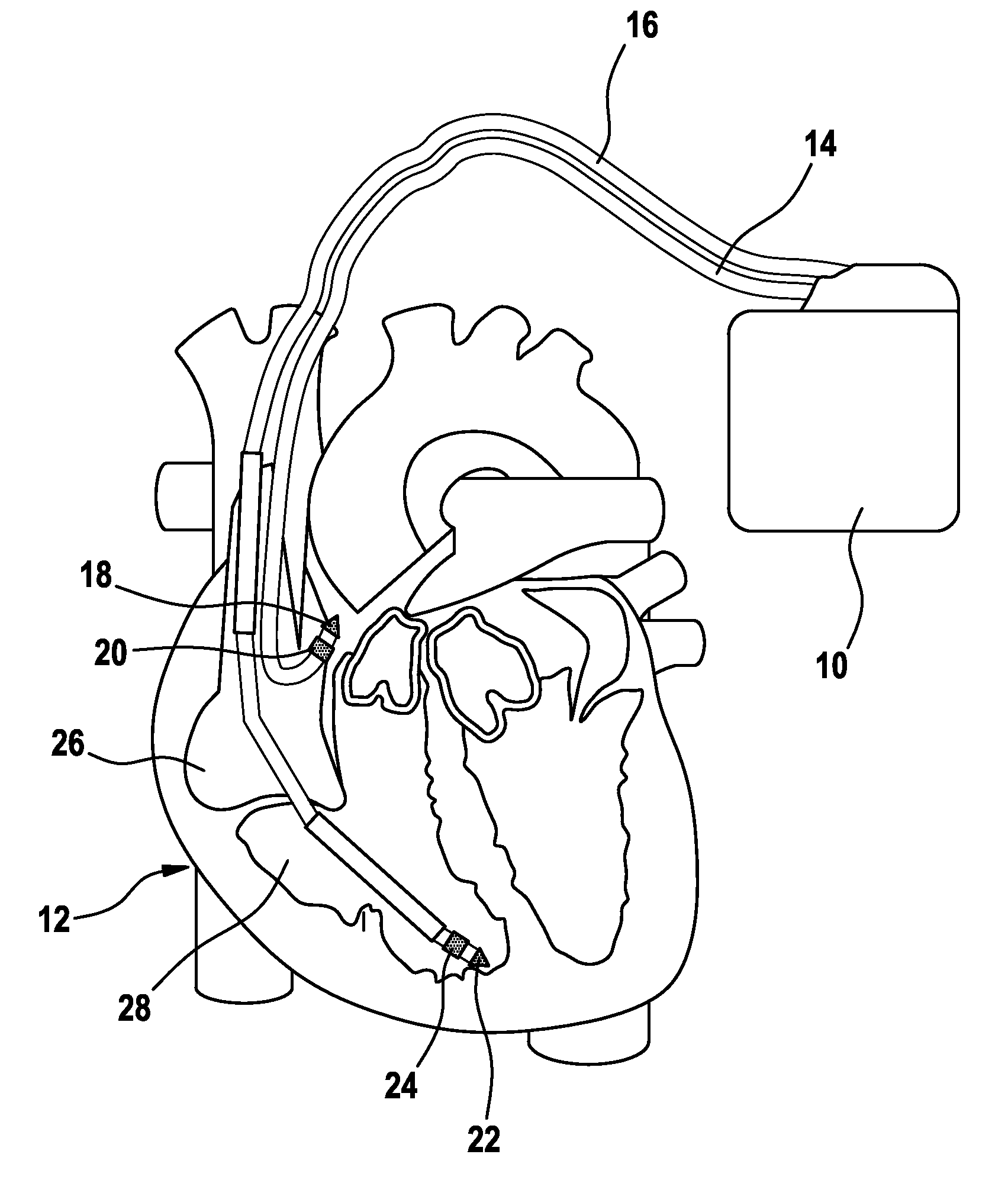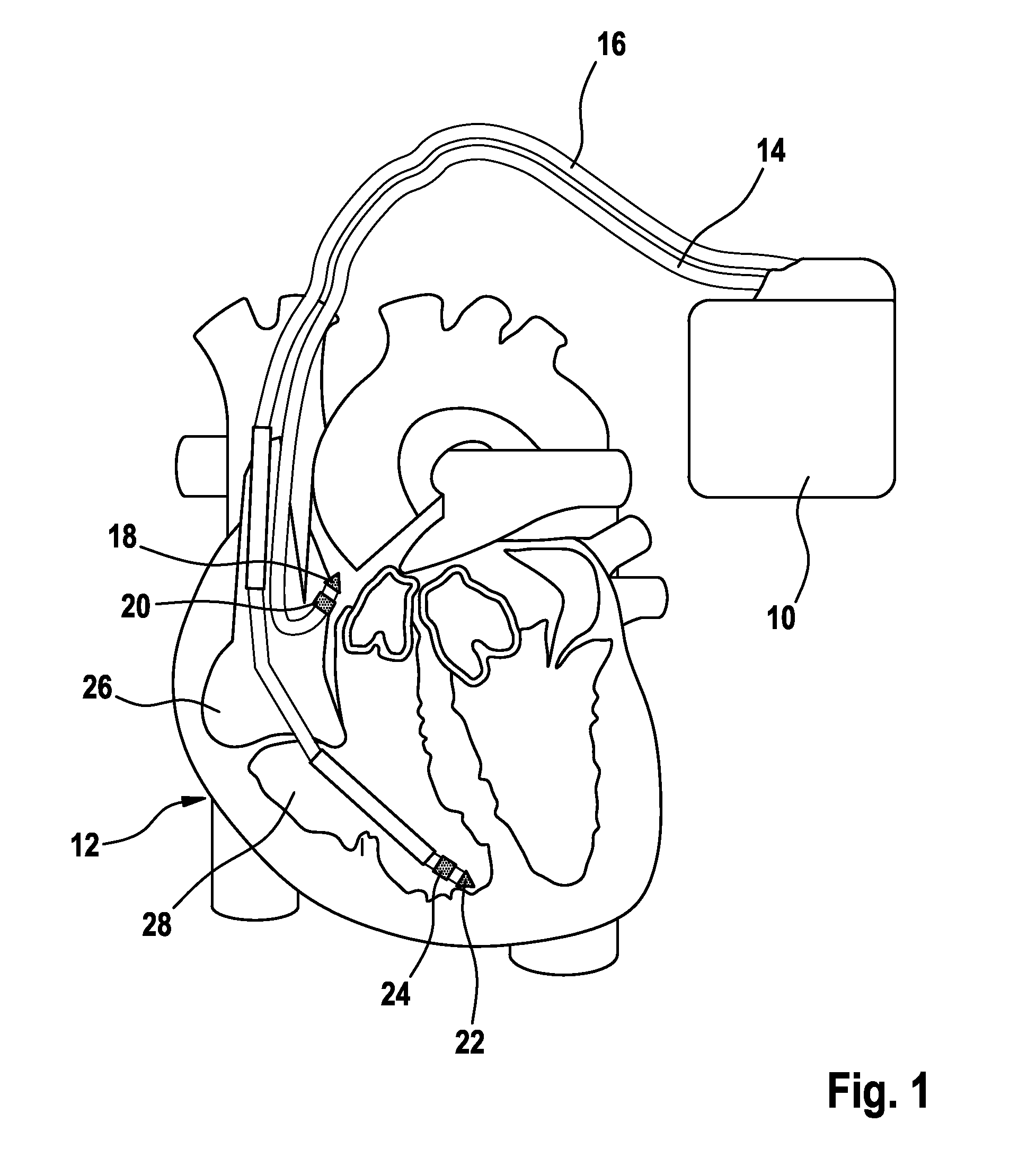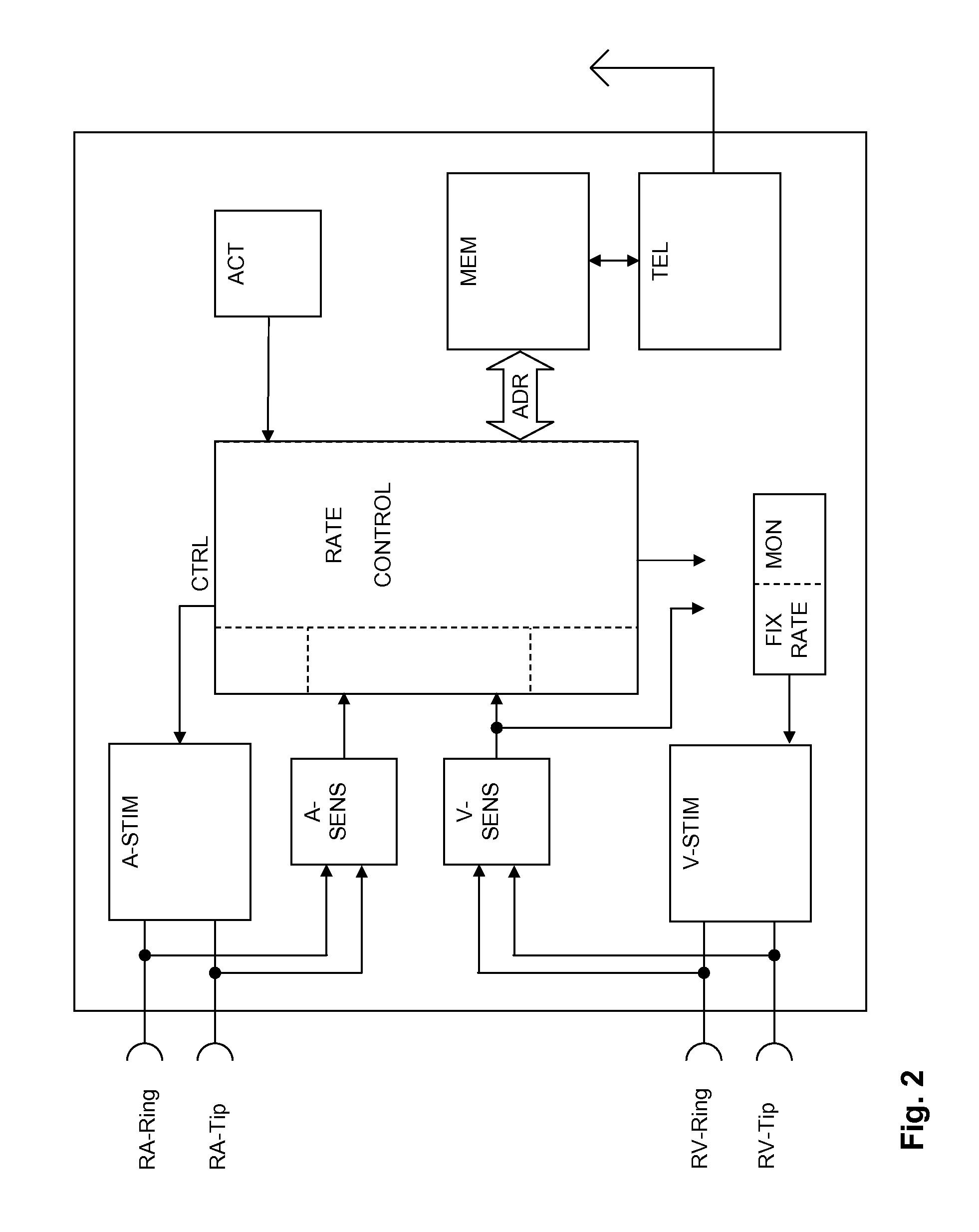Heart stimulator
a heart stimulator and heart technology, applied in the field of heart stimulators, can solve the problems of pre-excitation gap, ventricular fibrillation life-threatening, and disrupt the reentry circle, so as to minimize the risk of proarrhythmic
- Summary
- Abstract
- Description
- Claims
- Application Information
AI Technical Summary
Benefits of technology
Problems solved by technology
Method used
Image
Examples
Embodiment Construction
[0043]The following description is of the best mode presently contemplated for carrying out the invention. This description is not to be taken in a limiting sense, but is made merely for the purpose of describing the general principles of the invention. The scope of the invention should be determined with reference to the claims.
[0044]In FIG. 1 a dual chamber pacemaker 10 as heart stimulator connected to pacing / sensing leads placed in a heart 12 is illustrated. The pacemaker 10 is electrically coupled to heart 12 by way of leads 14 and 16. Lead 14 has a pair of right atrial electrodes 18 and 20 that are in contact with the right atria 26 of the heart 12. Lead 16 has a pair of electrodes 22 and 24 that are in contact with the right ventricle 28 of heart 12. Electrodes 18 and 22 are tip-electrodes at the very distal end of leads 14 and 16, respectively. Electrode 18 is a right atrial tip electrode RA-Tip and electrode 22 is a right ventricular tip electrode 22. Electrodes 20 and 24 ar...
PUM
 Login to View More
Login to View More Abstract
Description
Claims
Application Information
 Login to View More
Login to View More - R&D
- Intellectual Property
- Life Sciences
- Materials
- Tech Scout
- Unparalleled Data Quality
- Higher Quality Content
- 60% Fewer Hallucinations
Browse by: Latest US Patents, China's latest patents, Technical Efficacy Thesaurus, Application Domain, Technology Topic, Popular Technical Reports.
© 2025 PatSnap. All rights reserved.Legal|Privacy policy|Modern Slavery Act Transparency Statement|Sitemap|About US| Contact US: help@patsnap.com



